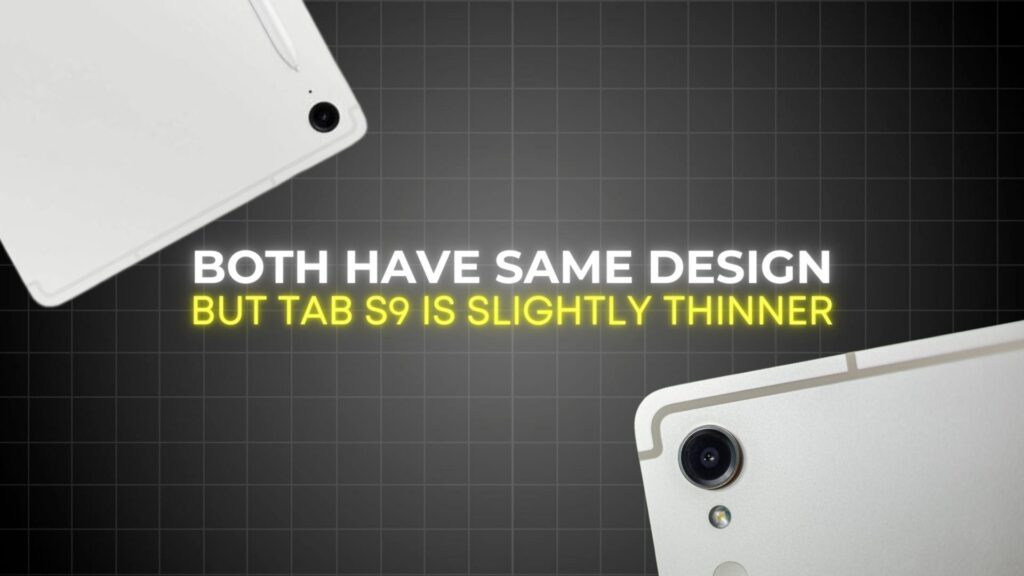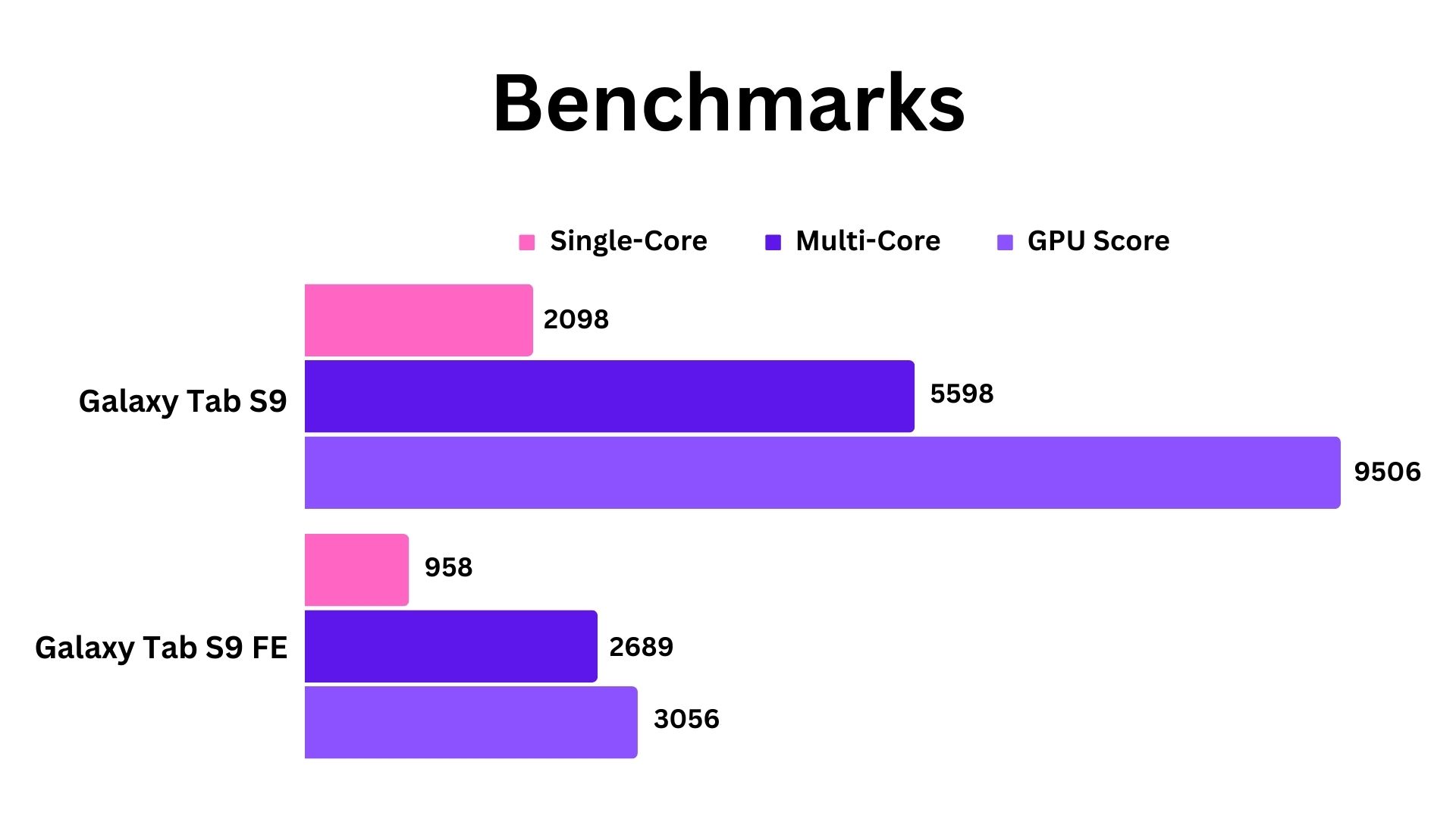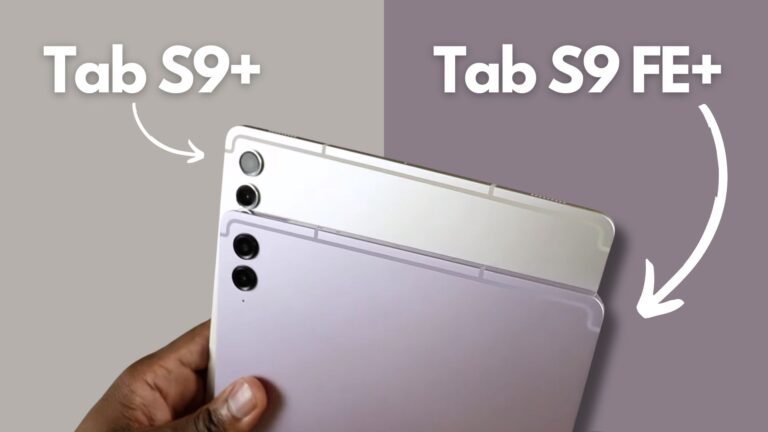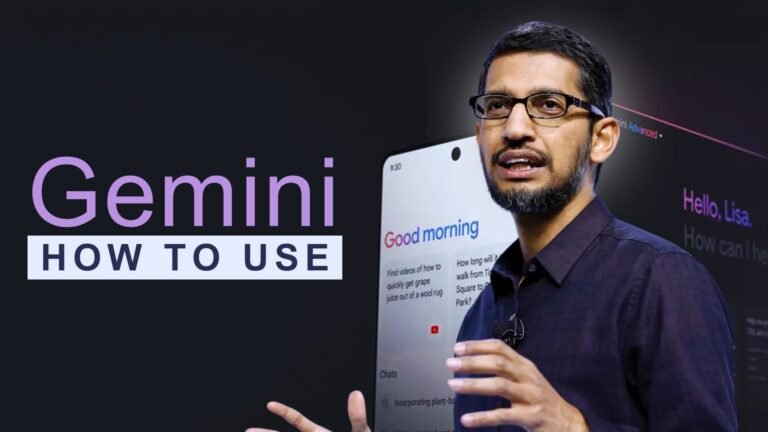When comparing the Galaxy Tab S9 FE vs Tab S9, the main thing to consider is the big price difference. The Tab S9 FE is half the price of the flagship Tab S9. This leads to a question: Is the Tab S9 FE a better deal, or is it worth paying more for the Tab S9?
Tab S9 FE vs Tab S9: Display

To begin with, the displays are nearly identical in size and possess the same aspect ratio. Their 16:10 aspect ratio makes them excellent for watching content. However, that is essentially where the similarities stop in terms of specifications.
The Tab S9 boasts an 11-inch dynamic AMOLED 2X display with a pixel density of 274 per inch, a resolution of 1600×2560, and an adaptive refresh rate of 120 hertz. The 10.9-inch IPS LCD display on the Tab S9 FE has a lower resolution of 1440×2304, a lower pixel density of 249 pixels per inch, and a slower adaptive refresh rate of 90 hertz.
I’m really pleased with the image quality on the FE display for both playing games and watching videos. It’s actually pretty good. The fact that we’re getting 90 hertz instead of the 60 hertz on the Tab S7 FE is another thing I adore. However, there’s no denying that the flagship model’s dynamic AMOLED 2X display is superior. The UI animations appear more fluid, the colors seem to jump off the screen, and the blacks are excellent. In general, I will undoubtedly give the Tab S9 the advantage, but it is unquestionably not twice as good as a Tab S9 FE.
Tab S9 FE vs Tab S9: Design

The two tablets share a full aluminum frame and back design. The Tab S9 is slightly thinner, but they both have the same footprint.
I really like that Samsung was able to reduce the IP68 rating to the FE version, which protects the tablets from dust and water. This is fantastic if you travel, work, or attend school with your tablet, but it’s also a really helpful feature if you use it inside your home and your dog has a hyperactive tail.
Both tablets now have a more secure fingerprint sensor and facial recognition for biometric authentication. An under-display fingerprint sensor is included with the Tab S9, and it’s built into the power button on the FE. I have had no issues with either of the sensors; they are both very accurate and responsive. However, I find that the under-display version on the Tab S9 is more comfortable for my grip.
Additionally, both tablets feature a micro-SD card slot that allows us to add up to one terabyte of additional internal storage, which can be used for files, movies, images, and the majority of apps.
Looking a little closer, we can see that the Tab S9 has four AKG-tuned speakers as opposed to the FE’s two. Furthermore, the flagship model’s sound is unquestionably richer. The audio is a better option for watching content because it seems warmer and has more presence.
Looking at the camera systems, the Tab S9 has the 13-megapixel rear facing camera versus 8 megapixels on the Tab S9. Both tablets have a 12-megapixel selfie camera.
Tab S9 FE vs Tab S9: Keybaord & Stylus

Another factor to consider is the ability to expand the functionality of each tablet by adding a keyboard case and a stylus.
Now, both tablets are compatible with the same two versions of book cover keyboard from Samsung. And of course, you can always use an external Bluetooth keyboard instead.
Now, both tablets also come with a free S Pen, which can be stored on the side or on the back of the tablet, but only the Tab S9 has a Bluetooth enabled S Pen, which offers some wireless functionality for things like camera control and media playback. Now, in terms of the actual writing experience, it’s virtually identical and neither requires a charge in order to write or draw.
Tab S9 FE vs Tab S9: Performance
Compared to the Exynos 1380 chip in the Tab S9 FE, Qualcomm’s Snapdragon 8 Gen 2 chip, which powers the Tab S9, provides superior CPU and GPU performance.
Let’s take a quick look at the Snapdragon 8 Gen 2 chip’s and the Exynos 1380’s single and multi-core performance. The Snapdragon chip performs significantly better. It performs noticeably better on the GPU as well.

Naturally, these are only benchmark results; what about the average real-world performance? You can use both tablets to browse the web, watch videos, and access social media, but the Tab S9 feels snappier and more responsive for these activities.
You can see the difference even when simply moving around the user interface and opening and closing apps, and I anticipate that it will continue to function better for a longer period of time. Of course, the Tab S9 is the more capable choice for tasks that are more demanding, like editing photos or videos.
During gameplay, it was evident that the Tab S9 outperformed the Tab S9 FE. Games like Genshin Impact and PUBG performed better on the Tab S9 due to its more powerful processor and additional RAM.
However, bear in mind that you will be paying twice as much, so always plan accordingly.
Tab S9 FE vs Tab S9: Battery
When it comes to battery life, the flagship model boasts a bigger 8,400 mAh battery than the FE’s 8,000. However, Samsung rates the Tab S9 at 15 hours, while the FE model lasts 18 hours. Both tablets provide 45-watt rapid charging; however, a charging adapter is not included in the box, so you will need to purchase one separately.
Final Thoughts
Both the Tab S9 and the Tab S9 FE initially come with 128GB of internal storage. The Tab S9 has 8GB of RAM, while the FE model has 6GB. If you choose to upgrade to 256GB of storage, the Tab S9’s RAM increases to 12GB, and the FE’s RAM goes up to 8GB.
The Tab S9 is definitely the higher-end option. It boasts a superior display, a more powerful processor and graphics, enhanced speakers, a more advanced camera setup, and an improved S Pen. However, the Tab S9 FE stands out for its great value. If top-tier performance and display quality aren’t your main concerns, the FE offers many similar features plus better battery life, all at about half the price of the Tab S9.
Now, you should see how the Tab S9 FE compares with the iPad 10. Hopefully this comparison was helpful.






